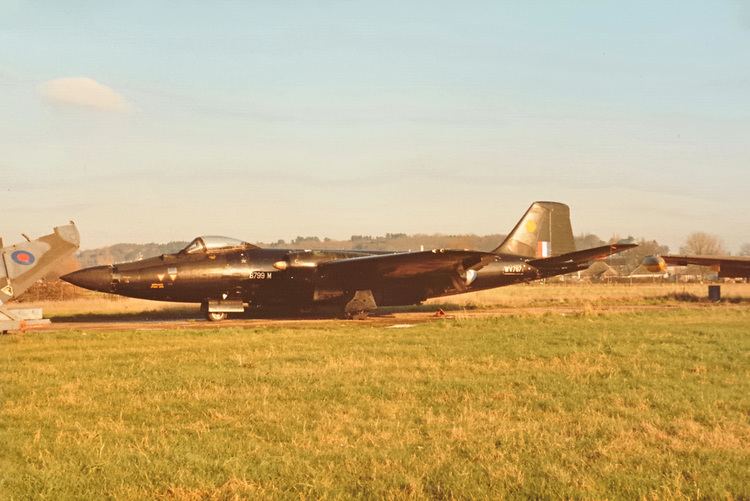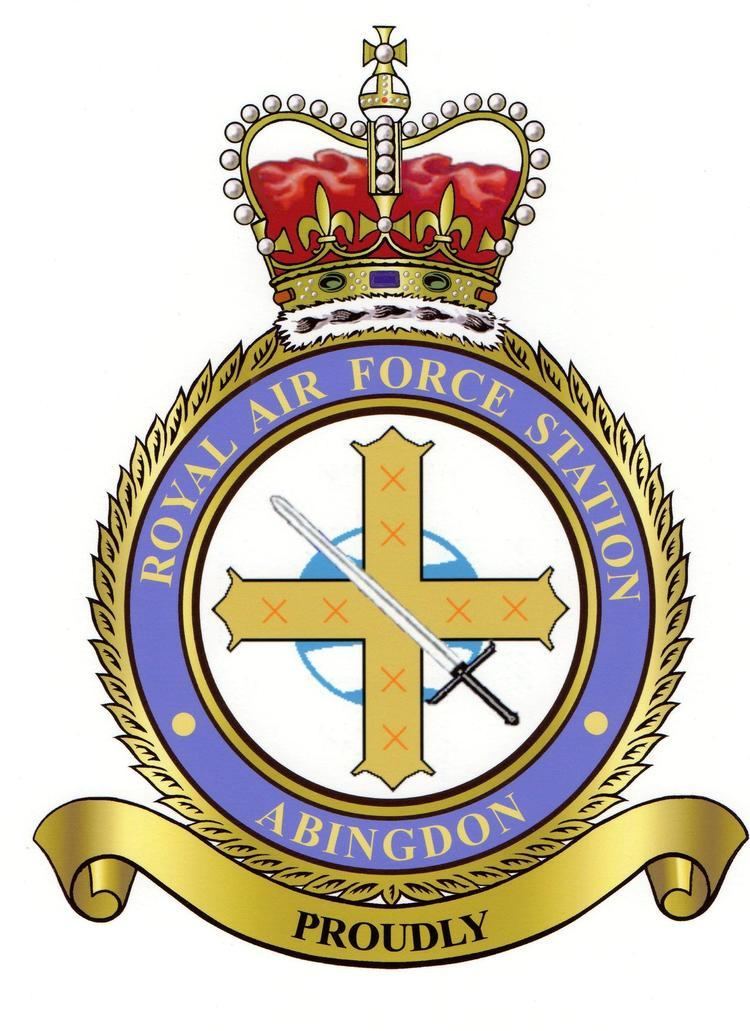Airport type Military Elevation AMSL 226 ft / 69 m Year built 1931 | In use 1932 - Present 18/36 5,911 | |
 | ||
Red devils raf abingdon
Royal Air Force Abingdon or more simply RAF Abingdon was a Royal Air Force station near Abingdon, Oxfordshire. It is now known as Dalton Barracks and is used by the Royal Logistic Corps.
Contents

History
The airfield was opened in 1932, initially as a training station for RAF Bomber Command.
Second World War

No. 10 Operational Training Unit RAF was based at the airfield throughout the Second World War and until 1946. From 1940 to 1942, Abingdon's station commander was Herbert Massey.
1945–60

After the Second World War RAF Abingdon became part of RAF Transport Command, and also became the home of No. 1 Parachute Training School which is now stationed at RAF Brize Norton. The Parachute Training School, and RAF Abingdon generally, featured heavily in the 1953 Alan Ladd film The Red Beret (called Paratrooper in the USA), and the Parachute Training School was used as a location for some scenes for the films Carve Her Name With Pride (1958) and Operation Crossbow (1965) as well as the French comedy Babette s'en va-t-en guerre (1959) which starred Brigitte Bardot. On 14 June 1968 Queen Elizabeth II conducted a royal review at RAF Abingdon to mark the 50th anniversary of the RAF.

About 1948–49 Headquarters No. 47 Group RAF, Transport Command, was at RAF Abingdon. The station, its personnel and aircraft (Yorks and Hastings) were involved in the Berlin Airlift.

In 1952 a ferry unit was based at RAF Abingdon. It moved Mosquito, Hornet, Meteor, Vampire and Spitfire aircraft. 15 Sabres were ferried from Canada but only 12 arrived. After checks and servicing the Sabres went to RAF Germany.

In 1953 all flying units dispersed to other units to make way for Nos. 24 and 47 Squadrons operating Handley Page Hastings Mks 1, 2 and 4. The three Mk 4 Hastings ("shiny fleet") belonged to 24 Squadron, serialled WD324, 326 and 500.
Also 1953, RAF Abingdon received the freedom of Abingdon.
On 22 April 1953 the spy George Blake arrived at RAF Abingdon, back from Korea via Moscow and Berlin.
In 1955 47 Squadron changed its Hastings for the Blackburn Beverley. Later 24 Squadron moved to RAF Colerne. It was replaced by No. 53 Squadron RAF operating the Beverley.
1961–92
Besides London University Air Squadron, the Oxford University Air Squadron was based at RAF Abingdon. Abingdon was also the home of No. 6 AEF (Air Experience Flight) operating between 6–8 DHC Chipmunks for ATC/CCF Air Cadet flight experience training. 6 AEF was one of a very few locations that offered air cadets the "Air Cadet Navigator" training course, leading to the award of Cadet Navigation Wings.
In the late 1960s the Blackburn Beverleys' hangars had dormer extensions put in the roof to take the extra height of the tailplane of the Short Belfasts of No. 47 Squadron. Once the nose of the Belfast was in the hangar the nose had to be lifted to get the tail fin under the lip of the roof. The nose was then lowered and the tail fin rose up into the dormer roof for that parking position. No. 46 Squadron was also at Abingdon at this time flying Andovers, one of their roles being to support UK MAMS (United Kingdom Mobile Air Movements). A small Army Air Dispatch unit was also supported by the airfield at this time.
From 1975 through to the 1990s, Abingdon became a maintenance field, with the AMS (Aircraft Maintenance Squadron) servicing BAE Hawk, SEPECAT Jaguar and Blackburn Buccaneer aircraft. In the early 80s the Battle of Britain Memorial Flight's Lancaster bomber spent a couple of winters at RAF Abingdon to undergo major refurbishment. During this period, RAF Abingdon was also home to the Field Repair Squadron (later Repair & Salvage Squadron) which included Aircraft Repair Flight, Aircraft Salvage and Transportation Flight (formerly 71 MU "Crash & Smash") and Battle Damage Repair Flight.
From 1986 to 1988 RAF Abingdon became home to the Thames Valley Police Air Support Unit, flying a helicopter in support of police operations. It was also the home of the London University Air Squadron in the seventies. An annual airshow took place at RAF Abingdon until the late eighties.
From 1981 many ex-airline Vickers VC10s were stored at the station following their purchase by the MoD. By the early 1990s, the aircraft were either converted to tanker configuration or scrapped. It was intended that the 3 Air Maintenance Support (3 AMS) unit would move from RAF Brize Norton, only a few miles away, to undertake the major servicing of the VC10 military fleet. This would have involved the modification of a number of hangars to raise the roof to allow access for the VC10 high tail section at a cost of £5m. A white paper to review defence requirements "Option for Change" recommended the closure of RAF Abingdon and that a new hangar, known as "Twin Peaks" be built at RAF St Athan with the reforming of 3 AMS, from RAF Brize Norton to 1 AMS at RAF St Athan in August 1992.
Units
The following units were also here at some point:
The station was closed in December 1992 and taken over by the British Army who renamed it Dalton Barracks. RAF Benson continues to use Abingdon as a diversion airfield and for helicopter training. No. 612 Volunteer Gliding Squadron also continues to fly Grob Vigilant Motorgliders from Abingdon.
Accidents and incidents
The operational training unit at RAF Abingdon suffered numerous air crashes from 1939 to 1946. Many of the crashes were close to the airfield.
